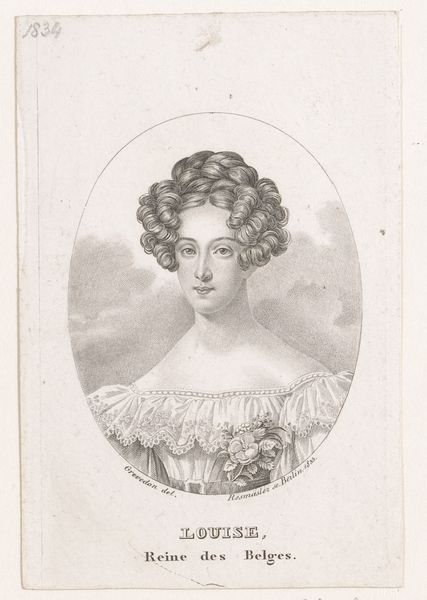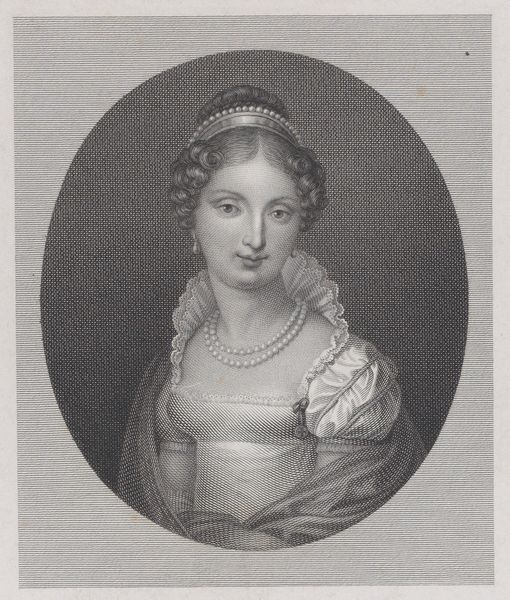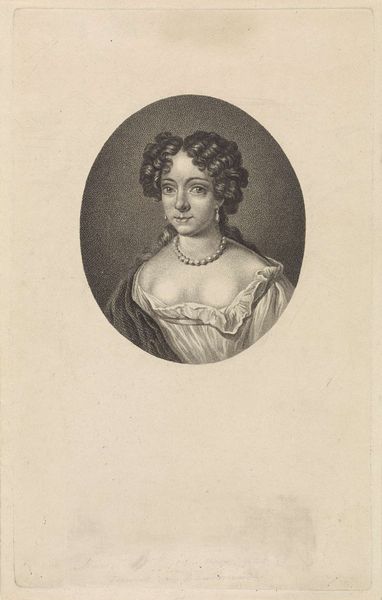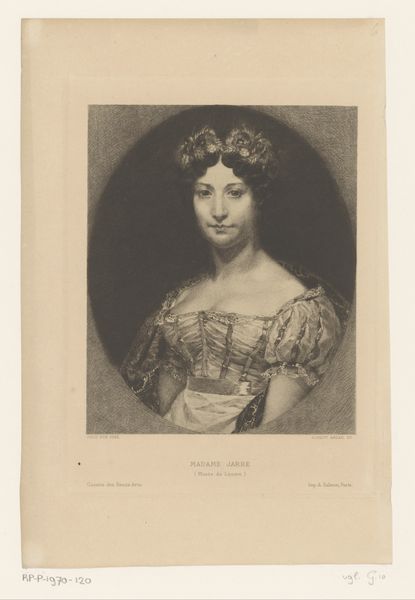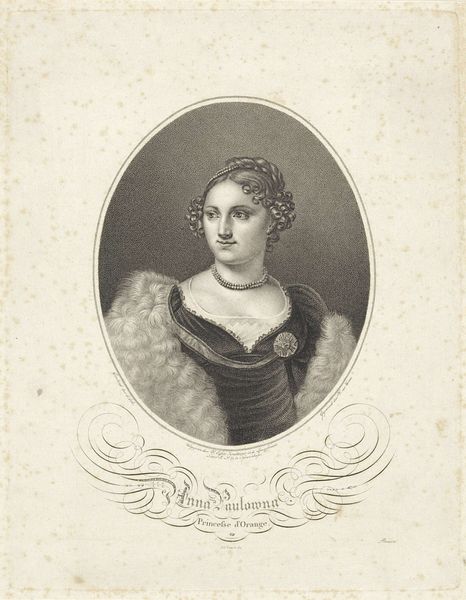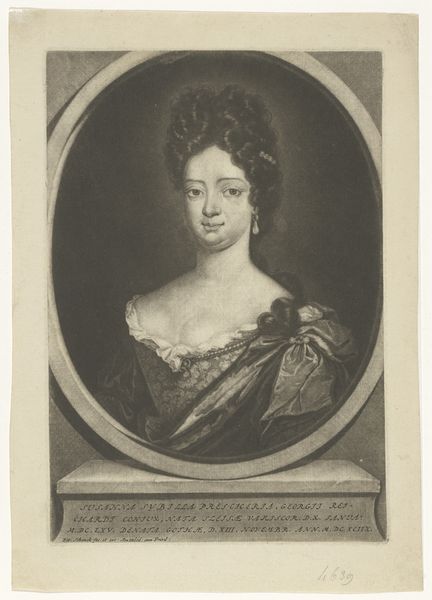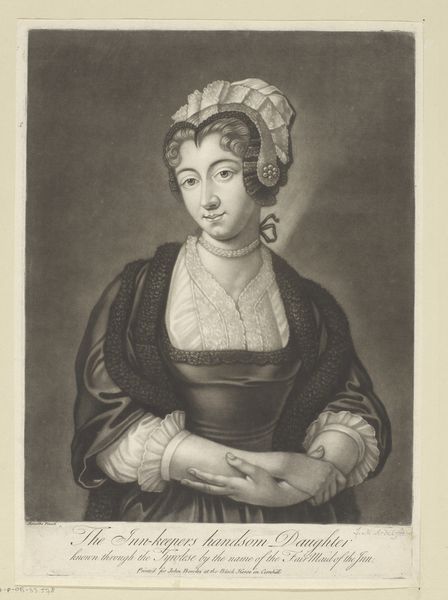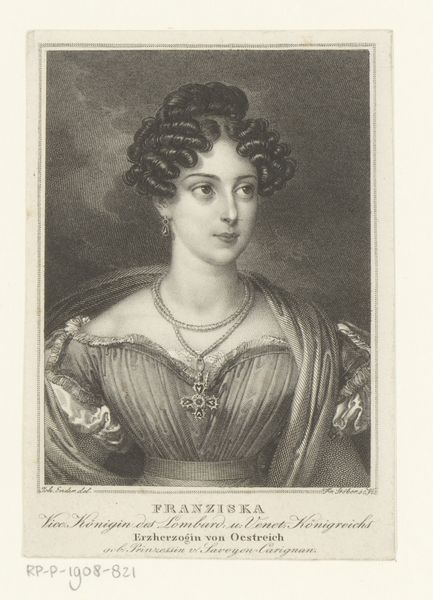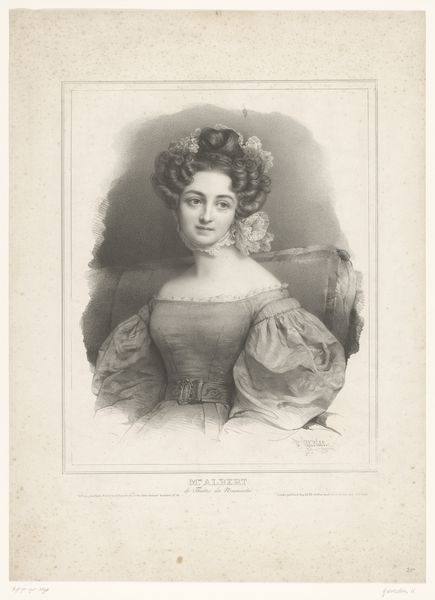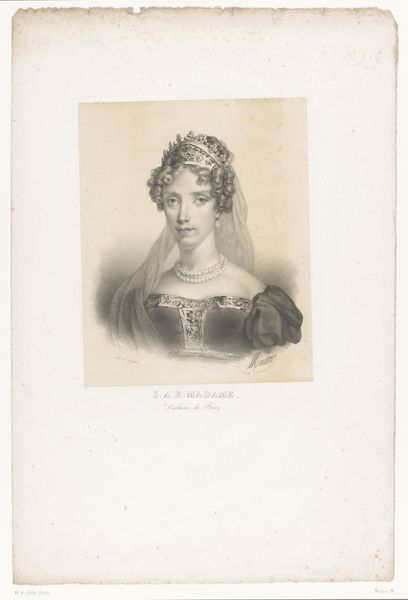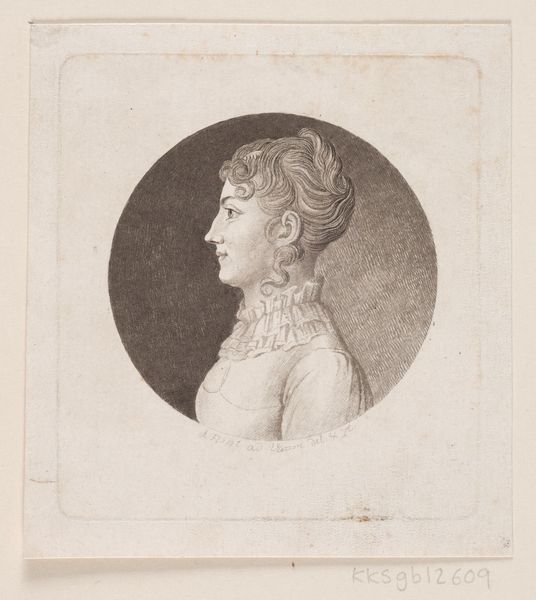
drawing, graphite
#
portrait
#
pencil drawn
#
drawing
#
neoclacissism
#
pencil sketch
#
pencil drawing
#
graphite
#
portrait drawing
#
academic-art
Dimensions: height 467 mm, width 361 mm
Copyright: Rijks Museum: Open Domain
This portrait of Elisabeth Ludovika, Queen of Prussia, was made by Friedrich Wilhelm Linger using a technique called stipple engraving. Stipple engraving is an intaglio process, meaning that the image is incised into a metal plate, in this case most likely copper. The artist would have used a tool to create thousands of tiny dots on the plate. When printed, these dots create subtle tonal variations, resulting in a soft, almost painterly effect. This method was popular for reproducing portraits, as it allowed for delicate rendering of skin tones and textures. The labor-intensive nature of stipple engraving meant that prints like these were relatively expensive, and available to a limited public. Consider too the social context here. Engravings like this one played a crucial role in disseminating images of royalty and nobility. They helped to construct and reinforce ideas about power, status, and beauty, and to disseminate those ideas to a broader public. By paying attention to the materiality and making of this print, we can better understand the complex social and cultural dynamics at play in its creation and consumption.
Comments
No comments
Be the first to comment and join the conversation on the ultimate creative platform.
